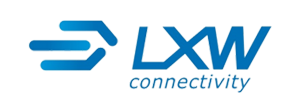What are DIN Rail Terminal Blocks?
Introduction
In the realm of electrical and electronic systems, establishing secure and reliable connections is paramount. DIN rail terminal blocks play a critical role in achieving this, providing a neat and organized means of connecting wires. In this article, we delve into the world of DIN rail terminal blocks, their types, advantages, and their essential role in PCB interconnects and printed circuit board connectors.
Basics of DIN Rail Terminal Blocks
Definition and Purpose
DIN rail terminal blocks are modular, reusable connectors mounted on DIN rails to organize and secure electrical connections. They are widely used in control panels, automation systems, and power distribution units, ensuring a tidy and efficient wire management system. By providing a reliable point of connection, they play a crucial role in maintaining system integrity and performance.
Components and Materials
A typical DIN rail terminal block consists of a conductive part, usually made of copper or another conductive metal, and an insulating housing made of durable materials like polyamide or thermoplastic. The conductive part ensures a secure electrical connection, while the insulating housing protects against short circuits and provides mechanical stability. The combination of these components results in a reliable and robust connector, capable of withstanding harsh environments and high-voltage conditions.
Types of DIN Rail Terminal Blocks
Screw Terminal Blocks
Screw terminal blocks are among the most common types, where wire connections are made by trapping the wire with a screw. They are known for their robustness and reliability, making them suitable for a wide range of applications, from industrial control systems to residential electrical panels.
Spring Clamp Terminal Blocks
These terminal blocks use a spring mechanism to create a secure connection. They offer a faster and often more reliable connection than screw terminals, as they are less susceptible to vibration and temperature variations. Spring clamp terminal blocks are particularly favored in applications where quick and easy installation is essential.
Insulation Displacement Connectors (IDCs)
IDCs offer a tool-free, quick connection solution. The wire is inserted into a slot, and the terminal block’s internal mechanism pierces the insulation to create an electrical connection. While not as common as screw or spring clamp types, IDCs are gaining popularity for their ease of use and time-saving advantages.
Advantages of Using DIN Rail Terminal Blocks
Reliability and Durability
DIN rail terminal blocks are engineered to provide reliable connections over long periods, even in harsh industrial environments. The use of high-quality materials and precision manufacturing ensures their durability, offering a secure connection solution that stands the test of time.
Ease of Installation and Maintenance
The modular nature of DIN rail terminal blocks allows for easy installation and reconfiguration, saving time and resources. Maintenance is also simplified, as individual blocks can be quickly replaced or adjusted as needed, ensuring minimal downtime and optimal system performance.
Importance in PCB Interconnects
DIN rail terminal blocks play a crucial role in PCB interconnects, providing a secure and reliable means of connecting printed circuit boards to other components or systems. They ensure signal integrity in printed circuit board connectors, maintaining the performance and reliability of the entire electronic system.
Selection and Installation
Choosing the Right Terminal Block
Selecting the appropriate DIN rail terminal block requires a thorough understanding of the application’s electrical and environmental requirements. Consider factors such as voltage, current, wire size, and environmental conditions when choosing a terminal block to ensure optimal performance and reliability.
Installation Best Practices
Proper installation is crucial for ensuring the long-term reliability of DIN rail terminal blocks. Follow manufacturer guidelines and best practices, ensuring that all connections are secure and that the terminal blocks are properly mounted to the DIN rail. Pay close attention to torque specifications for screw terminals, and ensure that spring clamp and IDC connections are properly seated.
Innovations and Future Trends
The field of electrical connectors is constantly evolving, and DIN rail terminal blocks are no exception. Innovations in materials and design continue to improve their performance and reliability, while trends toward miniaturization and increased functionality are opening up new possibilities for their use in electronic systems.
Conclusion
DIN rail terminal blocks are an indispensable component in electrical and electronic systems, offering a reliable and efficient solution for wire connections. Their modular design, ease of installation, and robust performance make them a popular choice in a wide range of applications, ensuring the integrity and reliability of the entire system.
LXW Connector, with its extensive expertise in connectivity solutions, offers a comprehensive range of board-to-board connectors that exemplify innovation and reliability. We encourage you to explore our products, reach out with your inquiries, and discover how we can enhance your electronic projects. Our dedicated team is ready to assist you in finding the perfect connector solution, ensuring success in your endeavors. Contact us today and take the first step towards exceptional connectivity solutions!

